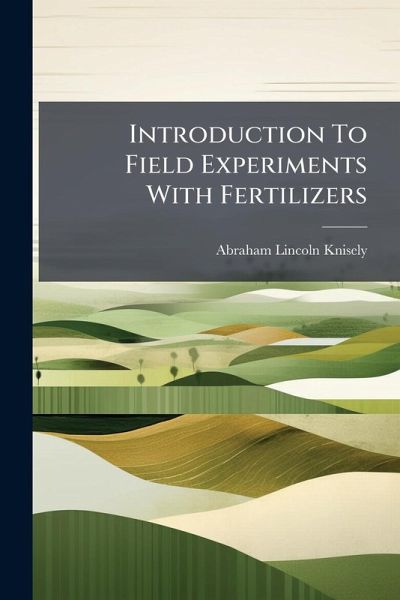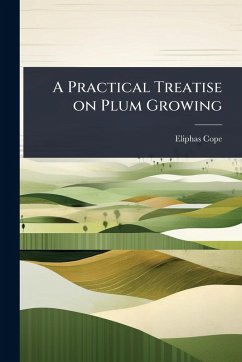
Introduction To Field Experiments With Fertilizers

PAYBACK Punkte
7 °P sammeln!
"Introduction To Field Experiments With Fertilizers" by Abraham Lincoln Knisely provides a comprehensive guide to conducting effective field experiments with fertilizers. This book is an invaluable resource for students, researchers, and practitioners in agronomy and agricultural science, offering detailed methodologies and practical insights into optimizing fertilizer use. Knisely's work emphasizes the importance of rigorous experimental design and data analysis in understanding the impact of different fertilizers on crop yields and soil health. This book covers a wide range of topics, from i...
"Introduction To Field Experiments With Fertilizers" by Abraham Lincoln Knisely provides a comprehensive guide to conducting effective field experiments with fertilizers. This book is an invaluable resource for students, researchers, and practitioners in agronomy and agricultural science, offering detailed methodologies and practical insights into optimizing fertilizer use. Knisely's work emphasizes the importance of rigorous experimental design and data analysis in understanding the impact of different fertilizers on crop yields and soil health. This book covers a wide range of topics, from initial planning and site selection to data interpretation and reporting. By providing clear and concise explanations, Knisely equips readers with the knowledge and skills necessary to conduct meaningful and reliable field experiments. This work has been selected by scholars as being culturally important, and is part of the knowledge base of civilization as we know it. This work was reproduced from the original artifact, and remains as true to the original work as possible. Therefore, you will see the original copyright references, library stamps (as most of these works have been housed in our most important libraries around the world), and other notations in the work. This work is in the public domain in the United States of America, and possibly other nations. Within the United States, you may freely copy and distribute this work, as no entity (individual or corporate) has a copyright on the body of the work. As a reproduction of a historical artifact, this work may contain missing or blurred pages, poor pictures, errant marks, etc. Scholars believe, and we concur, that this work is important enough to be preserved, reproduced, and made generally available to the public. We appreciate your support of the preservation process, and thank you for being an important part of keeping this knowledge alive and relevant.






![Results of Experiments With Early, Medium and Late Sowings of Grain [microform] Cover Results of Experiments With Early, Medium and Late Sowings of Grain [microform]](https://bilder.buecher.de/produkte/66/66188/66188398n.jpg)





